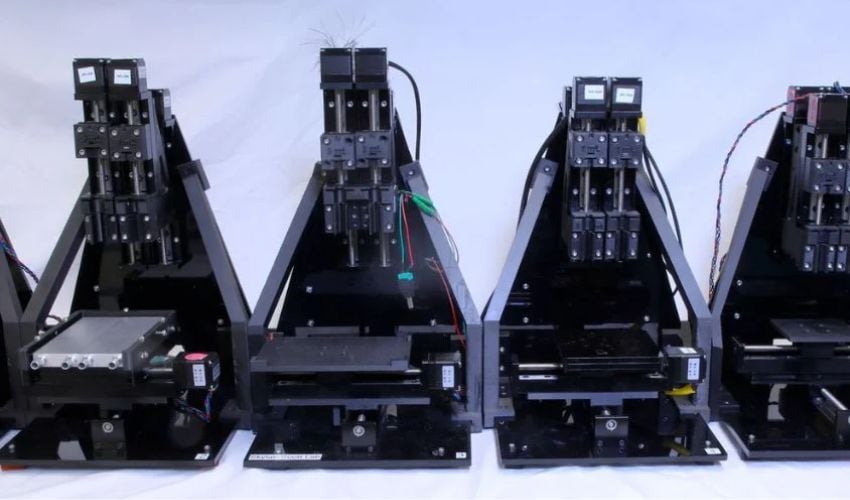Printess: The Open Source Bioprinter for Just $250

3D bioprinting is a pioneering additive manufacturing process that combines biomaterials, living cells and active biomolecules to create structures that mimic the properties of natural tissue. This technology plays a crucial role in regenerative medicine and tissue engineering. However, the impressive possibilities of 3D bioprinting are often accompanied by high costs (up to 200,000 US dollars) for the required bioprinters, which poses major challenges for many research institutions. This is where the Skylar Scott Lab at Stanford University comes in, presenting the modular and open 3D bioprinter Printess as a promising solution.
The new Printess bioprinter uses Direct Ink Writing (DIW) technology, an innovative 3D printing process in which paste-like materials are extruded directly through a nozzle and precisely applied to create complex structures with high resolution and a wide variety of materials. In total, the printer consists of six linear actuators, a microcontroller and 3D-printed and laser-cut components designed in SolidWorks and Onshape. This architecture makes it possible to flexibly adapt the Printess printer to specific requirements, whether by scaling the build space or adapting the print heads.
Another significant advantage of the system is its high movement accuracy of ten micrometers, which supports advanced DIW methods such as multi-material printing and active mixing during printing. In addition, the assembly instructions and firmware are made freely available, allowing for easy replication and customization. This openness promotes collaboration in the scientific sector and facilitates the integration of new functions. But that’s not all: one of the biggest advantages of the printer is its price. At a total of just 250 US dollars, access to this technology is made considerably easier. Despite the low price, Printess has an impressive repeatability of ± five micrometers. This means that numerous materials with different viscosities can be processed, and the multi-material capabilities make the printer particularly versatile. Printess thus opens up promising prospects for the future – from tissue engineering to the development of new biomaterials – and offers researchers a major advantage. Find out more about Printess HERE.
What do you think of the low-cost 3D bioprinter? Let us know in a comment below or on our LinkedIn, Facebook, and Twitter pages! If you are looking for more 3D printing in medical and dental content, check out our dedicated page HERE. Don’t forget to sign up for our free weekly Newsletter here, the latest 3D printing news straight to your inbox! You can also find all our videos on our YouTube channel.
*Cover Photo: Printess






